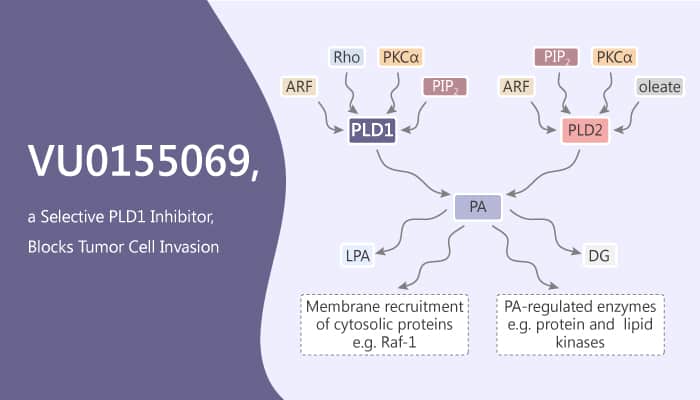Phospholipase D (PLD) belongs to the phospholipase superfamily, which widely exists in animals, plants, yeast, bacteria, and viruses. In mammalian cells, there are two PLD isoforms, PLD1 and PLD2. The enzyme involves in various physiological processes, such as membrane trafficking, cytoskeletal reorganization, and cell migration. PLD is also related to certain diseases, including Parkinson’s and various cancers.
Sarah A Scott, et al reported a lot of PLD inhibitors on anti-cancer research.
In the first step, they synthesized a class of compounds, which act as PLD inhibitors. Among them, VU0155069 (Compound 69) more selectively inhibits PLD1, with 20-fold selectivity over PLD2, and the corresponding IC50s are 46 nM and 933 nM.

In addition, VU0155069 exhibits potent inhibitory activity in a cellular assay. In cells, VU0155069 also selectively inhibits PLD1, and shows 100-fold selectivity over PLD2. The IC50s are 110 nM and 1800 nM, respectively.
Furthermore, researchers examined the effect of these inhibitors on three breast cancer cell lines. The cells are MDA-231 human breast cancer cell line, the mouse metastatic breast cancer cell line 4T1 and PMT cells. They chose different concentrations ranging from 0.2 µM to 20 µM. The higher concentration (20 µM) of VU0155069 suppresses PLD1 as well as PLD2. However, low concentration (0.2 µM) of the compound selectively inhibits PLD1. What’s more, VU0155069 markedly reduces the migration of the three cancer cell lines.
References:
1. Lewis JA, et al. Bioorg Med Chem Lett. 2009 Apr 1;19(7):1916-20.